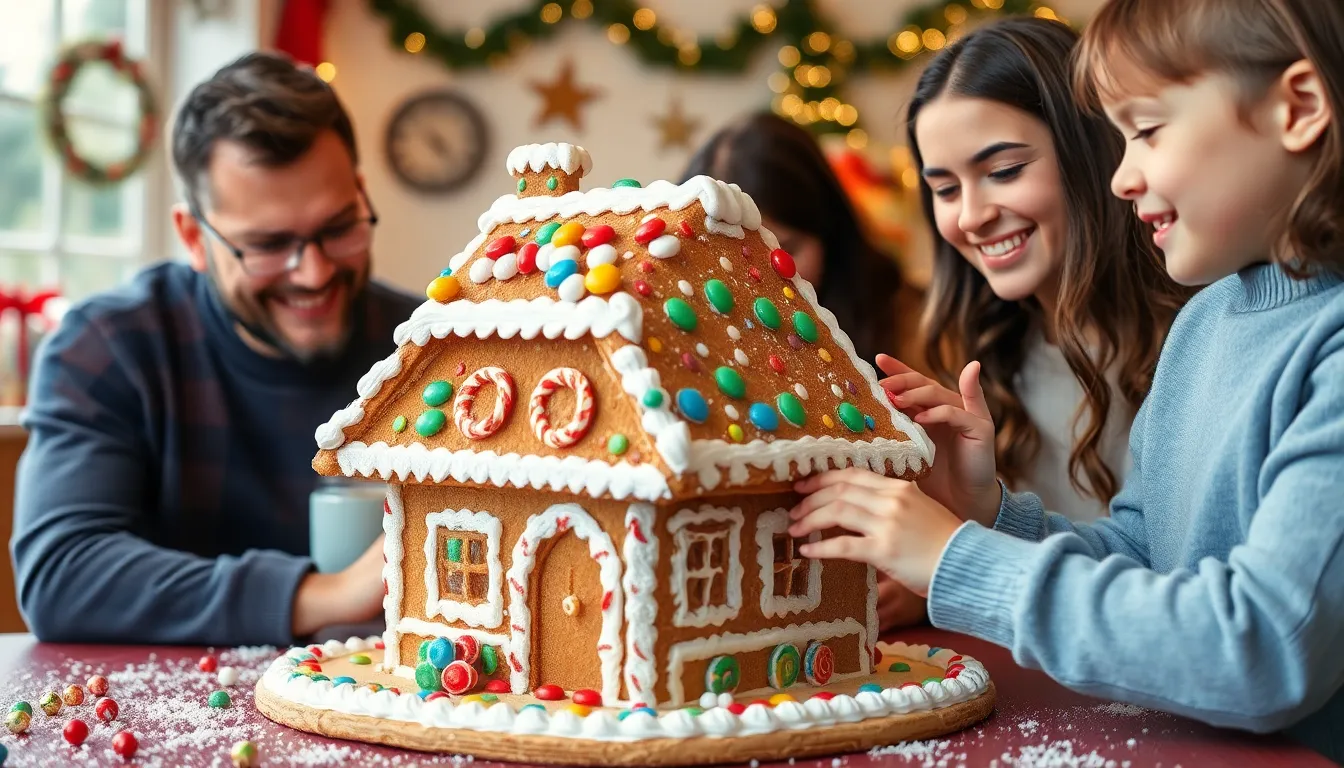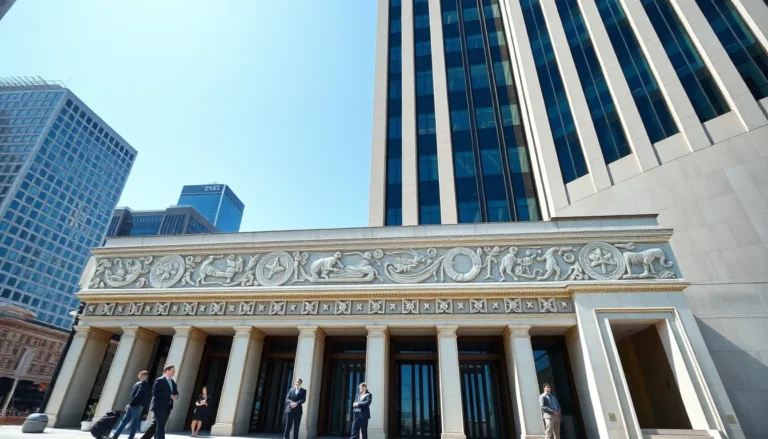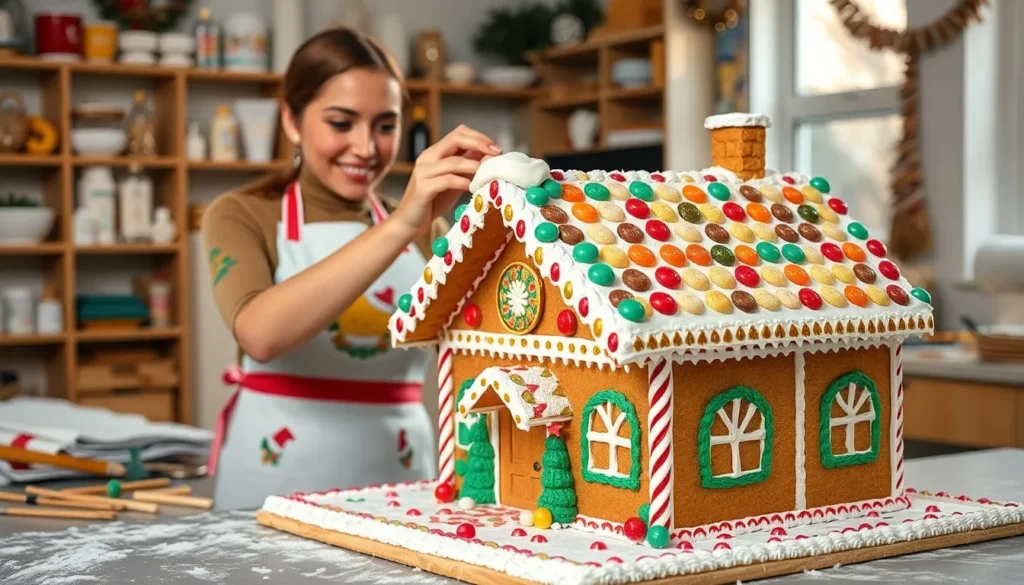Table of Contents
ToggleGingerbread houses aren’t just for holiday cheer—they’re a delicious blend of creativity and engineering. Imagine a world where candy canes serve as support beams and frosting acts as mortar. This whimsical architecture invites anyone with a sweet tooth and a dash of imagination to dive into the world of edible design.
Overview of Gingerbread House Architecture
Gingerbread house architecture merges artistry and engineering, offering a delightful medium for creativity. Structures often feature intricate designs, showcasing steep roofs and whimsical features. Materials like gingerbread, royal icing, and assorted candies form the foundational components of these edible structures.
Architectural styles vary significantly, ranging from rustic cottages to elaborate castles. Each design incorporates decorative elements that enhance its visual appeal. Candy canes typically serve as structural pillars while gumdrops often act as vibrant roof tiles.
Construction methods play a crucial role in stability. Builders utilize royal icing as a mortar to secure walls and roofs in place. It’s important to plan dimensions thoroughly to ensure structural integrity. Many enthusiasts adopt templates for consistency, enabling them to replicate favorite designs.
Festive themes also influence the architectural choices made in gingerbread houses. Holiday motifs inspire designers to incorporate elements like snowmen, Christmas trees, and lights. Events such as competitions encourage innovative ideas, pushing the boundaries of traditional designs.
Architects in this realm often seek new challenges, testing their skills with complex designs. Advanced techniques, such as using melted sugar for windows, elevate the craftsmanship involved in gingerbread house making. Community involvement thrives, with workshops and events dedicated to teaching these skills.
Ultimately, gingerbread houses reflect individual creativity and collective tradition. Each creation tells a story, inviting onlookers to appreciate the meticulous effort put into these tasty works of art.
Historical Significance

Gingerbread houses hold a rich history that intertwines with various cultural traditions worldwide. Their roots trace back to the 15th century, where gingerbread was often created for special occasions.
Origins of Gingerbread Houses
Germany stands out as the birthplace of gingerbread houses during the 19th century. The Brothers Grimm’s fairy tale “Hansel and Gretel” popularized the concept, inspiring many to create these enchanting edible structures. Craftsmen in Germany began constructing intricate models, celebrating the Christmas season with creativity and skill. Members of the community embraced this tradition, combining baking techniques and artistic expression.
Cultural Symbolism
Gingerbread houses symbolize warmth, family, and festivity during holidays. Various cultures incorporate them into celebrations, representing love and togetherness. In many regions, constructing a gingerbread house offers an opportunity for families to bond while sharing traditions. Countries like Sweden and Mexico continue to cherish their own versions, each reflecting local customs and festive practices. These edible architectures capture more than just aesthetics; they convey age-old stories and values associated with community and heritage.
Design Elements
Gingerbread houses feature distinct design elements that enhance their visual appeal and structural integrity. Key components include structural components that provide stability and decorative techniques that elevate aesthetic qualities.
Structural Components
Foundation plays a crucial role in any gingerbread house. Sturdy gingerbread panels form walls and roofs, creating a primary framework. Royal icing acts as mortar, binding panels and ensuring lateral stability. Dimensions of walls and roofs require careful planning for balance, while additional supports like candy canes or pretzel rods strengthen corners. Utilizing diverse shapes, such as arches or gables, adds architectural interest. Consideration of weight distribution also affects overall durability, ensuring that elaborate designs hold together through the holiday season.
Decorative Techniques
Decorative elements transform gingerbread houses into whimsical creations. Frosting serves as both adhesive and embellishment, offering a snowy appearance. Assorted candies, like gumdrops or M&Ms, contribute vibrant colors and textures. Additionally, fondant allows for intricate designs, such as flowers or bows. Creative use of edible glitter enhances sparkle, mimicking frost or festive lights. Each design choice reflects individual creativity, making every house a personalized masterpiece. Attention to detail in these techniques showcases artistic flair while contributing to the overall theme.
Contemporary Trends
Contemporary trends in gingerbread house architecture showcase a blend of creativity and innovation.
Innovative Designs
Innovative designs in gingerbread houses often feature modern aesthetics. Architects and enthusiasts experiment with geometric shapes, incorporating angular lines and avant-garde structures. Minimalist decorations gain popularity, emphasizing clean lines and strategic use of color. Others explore unconventional materials like vegan-friendly ingredients, enhancing both creativity and dietary considerations. Interactive elements, such as edible lights or movable parts, entice participants, encouraging engagement. Unique themes emerge, including pop culture references and local landmarks, reflecting contemporary culture. These trends inspire individuals to push boundaries, transforming traditional gingerbread houses into contemporary art forms.
Sustainability in Gingerbread House Architecture
Sustainability becomes increasingly significant in gingerbread house architecture. Many creators prioritize organic ingredients, reducing environmental impact while promoting health. Reusable decoration elements, such as ceramic or wooden pieces, replace single-use candies. Composting leftover materials fosters eco-friendly practices, aligning with green living values. Workshops emphasize sustainable techniques, teaching participants about environmental responsibility in crafting. Local sourcing of ingredients also strengthens community ties, benefiting local farmers and suppliers. These sustainable choices not only enhance the authenticity of each gingerbread house but also reflect broader environmental awareness and social responsibility.
Gingerbread house architecture is a celebration of creativity and tradition. Each structure embodies unique stories and cultural significance while inviting individuals and families to explore their artistic sides. The blend of historical roots with contemporary trends showcases the evolving nature of this craft.
As more people embrace sustainability and innovative designs, gingerbread houses become not just festive decorations but also reflections of personal values. This delightful practice fosters community connections and encourages skill development, making it a cherished activity for generations. Ultimately, gingerbread houses are more than just sweet constructions; they’re a testament to imagination and shared experiences.







